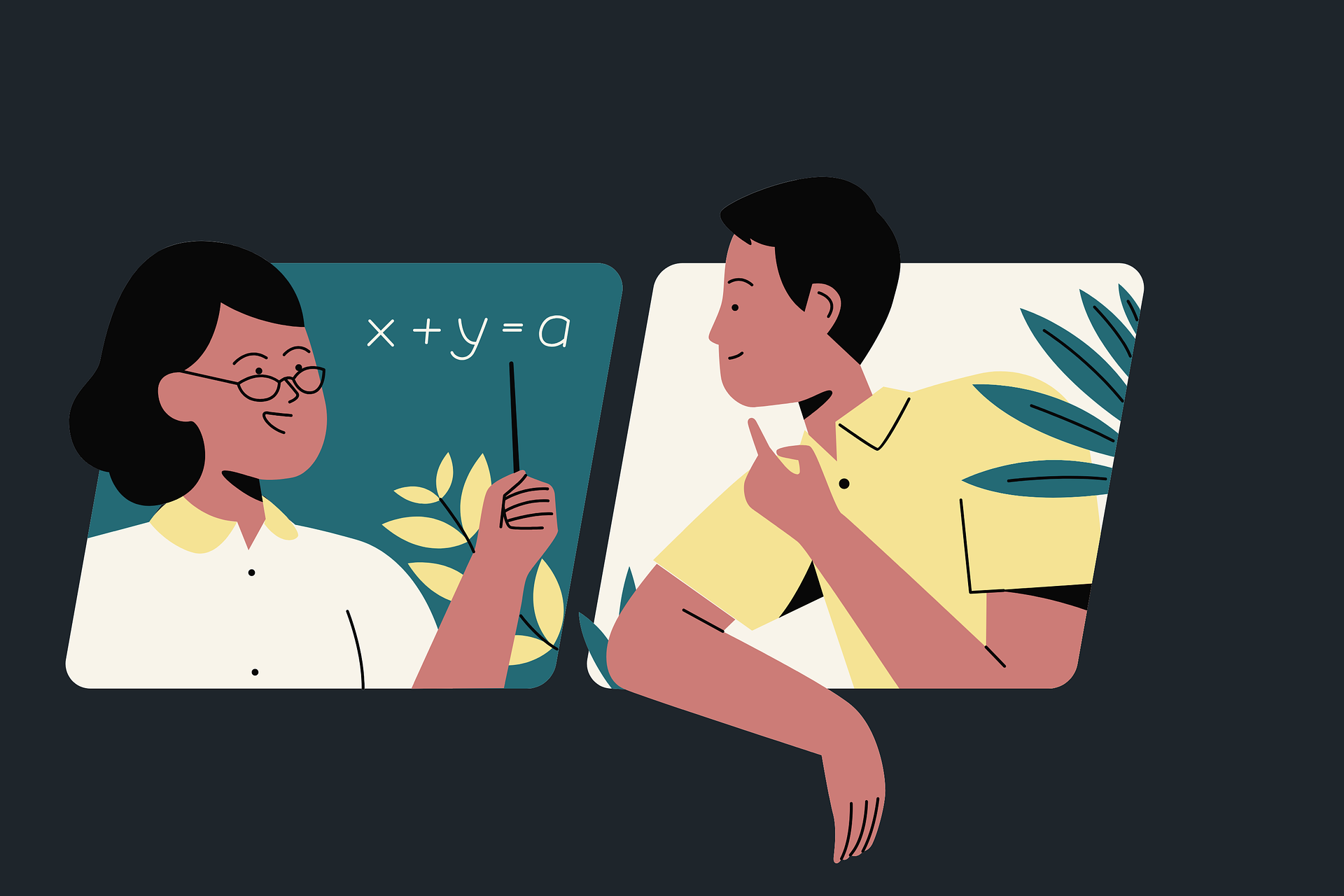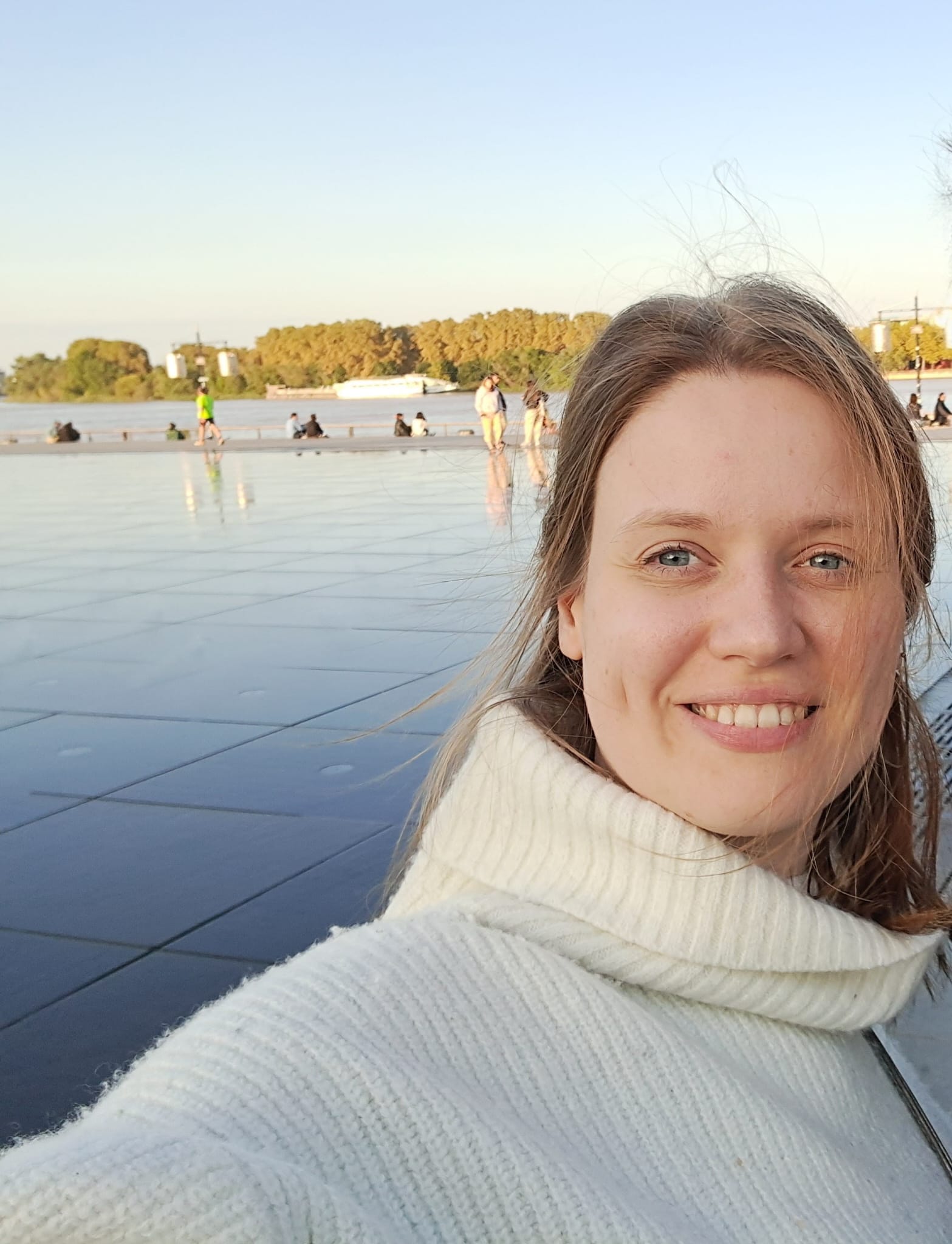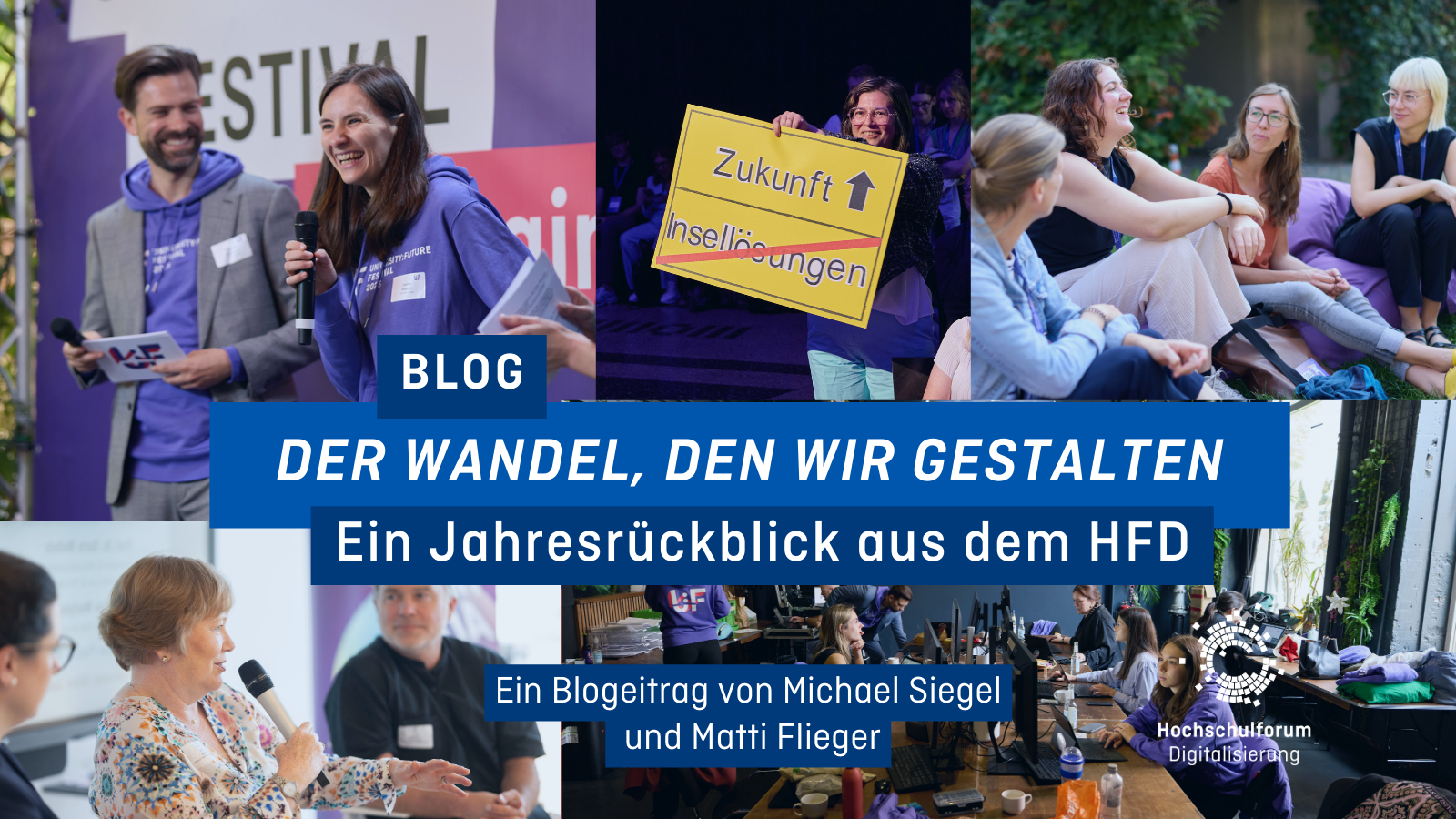Social check-in for the implementation of online teaching formats
Social check-in for the implementation of online teaching formats
11.09.24
After Tool 2 of the blog series “Student Wellbeing in Digital Studies” addressed ways and tools for ensuring psychosocial safety in the planning and preparation of courses, this blog post focuses on promoting student wellbeing during the delivery of courses. The focus is on synchronous online teaching using video conferencing systems, which is also playing a role at many universities after the coronavirus pandemic. Based on our interviews with students, we present ways in which a good start to an online seminar can be designed, with a focus on promoting appreciative relationships between lecturers and students as well as between students.
Many studies have already established the links between students’ mental well-being and the coronavirus-related switch to online teaching formats (Traus et al. 2020; Besa et al. 2021; Giesselbach et al. 2023; TK 2023). There is a consensus that the lack of social contact and direct exchange with lecturers is the greatest stress factor. Students particularly missed the informal or more casual conversations on campus. This raises the question of how the lack of opportunities for interaction and social exchange in the digital world can be compensated for and how appreciative relationships can be encouraged. It is important to note that practices of informal exchange cannot simply be transferred 1:1 to the digital world, but that online teaching is accompanied by complex changes in media technology and media culture that have a significant impact on interpersonal communication. The tools (e.g. chats, whiteboards, breakout sessions or surveys) that are used cannot be regarded as neutral instruments that have been translated into digital form and have a specific function to fulfill. They actively shape social exchange and thus teaching and ultimately determine aspects such as activity or inactivity, attention and addressability, motivation and distraction in a specific way (cf. Bohnenkamp et al. 2020).
How can social interaction be created in online teaching?
In contrast to face-to-face teaching, teaching via video conferencing systems is subject to different orders of interaction and does not have the same channels of perception. For example, there is no commonly perceived horizon of experience in which information such as smell, temperature or other environmental information can be shared. The senses are mostly limited to sight and hearing and are transmitted digitally. How I perceive the other person depends on the camera and microphone settings or the quality of the devices themselves (low-resolution image or a noisy, distorted microphone) as well as the selected image section, which often only shows the other person in fragments.

Intuitive interactions and fluent speaker changes are made more difficult as no direct eye contact can be established that addresses a specific person or group. The reduced mutual perception of the seminar participants also challenges the interpretation and understanding of non-verbal signals, which are, however, of great importance for the exchange.
For example, when situations arise in which students use subtle facial expressions to signal when they are unable to follow the seminar (cf. Gabriel/Pecher 2021). This very reduced or one-dimensional perception can also have an impact on the cognitive process and ultimately the learning success in the seminar context, which is also impaired, as the following experience report from a student makes clear:
Another effect relates more to interpersonal dynamics. Roth and Laut (2023) in their study on the Changing communication in organizations using video conferencing found that informal and personal discussions tend to be marginalized in favour of an effective and factual communication culture. This in turn has a negative impact on the development of trust and solidarity between the organization’s employees. An excerpt from a group discussion illustrates that this strong change in group feeling or interpersonal relationship building can also apply to online teaching in the university context:
Now, of course, it makes a difference for the bond whether the students already know each other from the face-to-face context or only get to know their fellow students or the lecturers in online teaching. The latter case is much more challenging for building relationships, which is also noted by lecturers:
The assessment that the quality of online teaching depends above all on the relationship with the lecturer is shared by the students. When asked when, for example, the use of didactic online tools such as collaborative work on whiteboards or shared notes (in the BigBlueButton video conferencing system) is considered to be conducive to learning, one person responded:
Pietsch and Zybura repeatedly emphasize in their project that social distancing processes and a lack of relational richness are not only due to the technical conditions of online teaching. Unconditional Teaching emphasized. The task of lecturers must be to convey a sense of community and belonging and to ensure an appreciative, attentive atmosphere as well as to express an authentic interest in the students. Only the social hierarchies that are inherently anchored in the university system would culminate in the digital space. Above all, it is important to take a power-critical look at social barriers and asymmetrical hierarchies at universities that curb self-determined learning by students. In her already in HFD discussion paper Pietsch and Zybura show which values form the basis for attitude development in order to ultimately break down social barriers in the teaching context.
Social check-in as a way of opening an online event with a rich relationship
We are all too familiar with opening situations in which teachers first check that the technology is working by saying “Can you hear me well?”. But how can teachers quickly establish good access to the students, as the first few minutes of an online event are of enormous importance for building relationships and creating a group feeling? One possibility is to put the subject matter of the course on the back burner at first and ask how the students are feeling in general, which one student reported as follows:
In the digital learning context in particular, authentic interest in the realities of the participants’ lives can be expressed through active questioning. Inquiring about the students’ state of mind, possible stresses and strains, but also resources, reduces hierarchies at the same time. It is important not to judge, but to establish common ground and appreciation. In doing so, it also makes sense to Showing teacher vulnerability and, if necessary, to start with a short report of your own experiences. Talking about mental health and self-care creates a culture of acceptance in which scope for action can develop:
Another possibility for a social check-in is based on the development of the aesthetic dimension in online teaching. Susanne Blazejewski suggests activating all the senses in online teaching, which is otherwise so rigid and technology-focused, to create touching momentsto create subjective experiences of well-being or discomfort, to perceive oneself and others or to enable physical activation and relaxation processes (cf. Blazejewski 2021).

A number of methods can be considered for opening the seminar, such as presenting the seminar participants in their personal working environment (e.g. by panning the camera around the room or taking photographs of individual objects). This task makes it possible to detach from one’s own perception as a portrait in the camera section in favor of a physical presence in the room in order to ultimately be more open to an exchange with the other students and the lecturer.
There are many different methods for a social check-in that can promote group spirit, social interaction and thus also the well-being of students. Which method works best for a particular group of students naturally varies and must be tested accordingly.
Summary: Tips and tricks for a social check-in
- Social check-in: “Mental health needs space”: give students space for mental health topics, start with their own condition if necessary and show their own vulnerability if necessary
- Social check-in: “Creating touching moments”: Moving round of introductions in your own workspace
- Check-In also for breakout sessions
- Create participation opportunities for more introverted students
- Informing about privacy: Do I make it clear that and how students can and should protect their private space in video conferences, e.g. through virtual backgrounds, suitable placement of the laptop or by switching sound and images on and off? Have I discussed which parts of a conference are recorded or published and which are not?
- Dealing with black tiles: Black tiles due to deactivated camera function can be read as a need for privacy and should be accepted as such. Nevertheless, teachers also have needs that they can and should communicate. If you articulate respectfully from your own position why you would like to see the students’ faces, they will probably react more favorably
- Reducing content : “Less is more”: Reducing the amount of content (not only) for online teaching can counteract student overload. Instead of imparting more and more knowledge, access to students’ own knowledge bases should also be activated and they should be addressed as experts in their own learning, perceptions and lifeworlds. This in turn can create more self-confidence and have a positive effect on well-being.
Besa, K., Kochskämper, D., Lips, A., Schröer, W., Thomas, S. (2021): Stu.diCo II – Die Corona Pandemie aus der Perspektive von Studierenden. Erste Ergebnisse der zweiten Erhebung aus der bundesweiten Studienreihe Stu.diCo. Online-Zugriff: https://doi.org/10.18442/194 (as of 08.05.2024).
Blazejewski, Susanne (2021): Berührende Momente in virtuellen Räumen. In: Luppold, S., Himmel, Wolfgang, Frank, H.J. (Hrsg.): Berührende Online-Veranstaltungen – so gelingen digitale Events mit emotionaler Wirkung. Ed. Springer Gabler: Heidelberg, S. 169-181.
Bohnenkamp, B., Burkhardt, M., Grashöfer, K., Hlukhovych, A., Krewani, A., Matzner, T., Missomelius, P., Raczkowski, F., Shnayien, M., Weich, A., Wippich, U. (2020): Online-Lehre 2020 – Eine medienwissenschaftliche Perspektive. Diskussionspapier Nr. 10. Berlin: Hochschulforum Digitalisierung. Online-Zugriff: https://hochschulforumdigitalisierung.de/wp-content/uploads/2023/09/HFD_DP_10_Online-Lehre_2020_Eine_medienwissenschaftliche_Perspektive.pdf (as of 08.05.2024).
Gabriel, S., Pecher, H. (2021): Soziale Präsenz in Zeiten von CoViD-19 Distanz-Lehre. In: MedienPädagogik 40 (CoViD-19), S. 206–228.
Giesselbach L, Leimann J, Bonner C, Josupeit J, Dieterich S, Quilling E. (2023): Psychische Gesundheit Studierender während des Online-Studiums im Zuge der COVID-19-Pandemie – quantitative und qualitative Befunde. In: Prävention und Gesundheitsförderung. Online-Zugriff: https://www.ncbi.nlm.nih.gov/pmc/articles/PMC10214319/pdf/11553_2023_Article_1046.pdf (as of 08.05.2024).
Pietsch, K., Zybura, T. (2022): Ressource anstatt Hürde sein: Wie Lehrende soziale Barrieren abbauen und Teilhabe fördern durch Unconditional Teaching. Diskussionspapier Nr. 17. Hochschulforum Digitalisierung. Online Zugriff: https://hochschulforumdigitalisierung.de/wp-content/uploads/2023/09/HFD_DP_17_Unconditional_Teaching.pdf (as of 08.05.2024).
Roth, P., Laut, C. (2023): Die Geteiltheit virtueller Situationen. Eine Untersuchung am Beispiel der Veränderungen von Kommunikation in Organisationen durch Videotelefonie. Zeitschrift für Soziologie 52, S. 105–121.
Die Techniker (2023): Gesundheitsreport. Wie geht’s Deutschlands Studierenden? Online-Zugriff: https://www.tk.de/resource/blob/2149886/e5bb2564c786aedb3979588fe64a8f39/2023-tk-gesundheitsreport-data.pdf (as of 08.05.2024).
Traus, A., Höffken, K., Thomas, S., Mangold, K., Schröer, W. (2020): Stu.diCo. – Studieren digital in Zeiten von Corona. Universitätsverlag Hildesheim.
Zybura, T. (2020): Showing Vulnerability. Blog post. Online access: https://www.unconditional-teaching.com/index.php?pg=showing-vulnerability (as of 08.05.2024)
Author

Tanja Brock (she/her), cultural and media scientist M.A.; research assistant at the Center for Research, Continuing Education and Counseling at ehs Dresden, in the projects ENHANCE (Mental Health in the Context of Digitalization Processes at Universities) and Smart Youth Work in Saxony. Tanja Brock is doing her doctorate in the DFG Research Training Group “Consequences of Social Assistance” at the University of Siegen on the digital media practices of recipients of open child and youth work.
This blog post is part 3 of the blog series “Toolbox on Student Wellbeing in the Digital Age”. This is a cooperation between the ENHANCE project (Mental Health in the context of digitalization processes at universities) at EHS Dresden and the HFD think tank Well-Being in the digital age at universities under the direction of Tina Basner. Feel free to share your ideas with us and the HFD community via the comment function or contact us by e-mail at tina.basner@che.de.


 Lena Nedwed
Lena Nedwed 
 Michael Siegel
Michael Siegel 
 Andreas Giesbert
Andreas Giesbert 